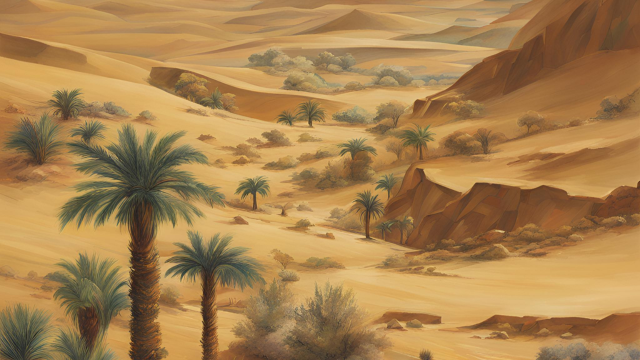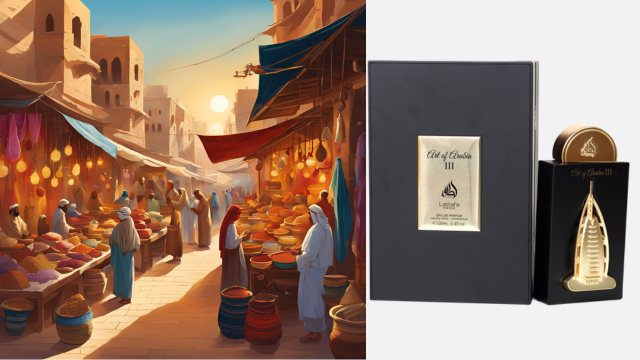The Art of Arabia: Bridging History, Culture, and Modernity
Art is more than just a creative expression—it’s a language that transcends time, geography, and culture. The Art of Arabia, particularly in Saudi Arabia, offers a profound glimpse into the region’s soul. From ancient rock carvings that whisper stories of early civilizations to contemporary installations that challenge societal norms, Saudi art is a dynamic blend of tradition and innovation.
Table of Contents
ToggleIn this article, we’ll journey through the rich artistic history of Arabia, explore its cultural significance, and uncover the modern renaissance shaping its future. Along the way, I’ll share personal experiences and answer commonly asked questions about this fascinating topic.
Table of Contents

The Origins of Arabian Art – Rock Art and Prehistoric Expression
The artistic journey of Saudi Arabia began thousands of years ago, with evidence of early human creativity found throughout the Arabian Peninsula. Rock art and carvings etched into stone surfaces provide a glimpse into the lives and beliefs of ancient peoples who inhabited the region.
Rock Art of Saudi Arabia:
- Jubbah and Shuwaymis: These UNESCO World Heritage Sites boast some of the oldest rock art, dating back over 8,000 years. The carvings depict animals, hunting scenes, human figures, and geometric patterns, offering insight into the daily lives, spirituality, and artistic expressions of early Arabians.
- Al-Magar Civilization: This archaeological site revealed fascinating sculptures and artifacts, showcasing artistic depictions of domesticated animals and early agricultural practices.
Personal Insight: As I traced my fingers over the carvings at Jubbah, I couldn’t help but feel connected to those who created them. It was as if they were speaking across millennia—a humbling reminder that art transcends time.
Significance of Rock Art:
- Cultural Identity: These carvings are more than artistic expressions; they serve as historical records, preserving the stories, beliefs, and traditions of ancient communities.
- Connection to the Land: Rock art reflects the intimate relationship between Arabia’s early inhabitants and the harsh yet beautiful desert environment, revealing how art was used to navigate, record, and revere their surroundings.

Islamic Art – The Heart of Arabian Creativity
Islamic art has long been a cornerstone of Saudi Arabia’s cultural expression. With the advent of Islam in the 7th century, artistic traditions took on religious, spiritual, and symbolic meanings, influencing architecture, calligraphy, ceramics, and textiles.
Key Characteristics of Islamic Art:
- Calligraphy: Arabic calligraphy is a defining element of Islamic art, revered for its intricate designs and spiritual significance. Qur’anic verses were skillfully incorporated into buildings, manuscripts, and decorative objects, blending aesthetics with faith.
- Geometry and Arabesque Patterns: Islamic art often features complex geometric patterns and arabesques, symbolizing the infinite nature of Allah. These motifs can be found in mosques, palaces, and everyday objects.
- Architecture: The architectural marvels of Saudi Arabia, from the Prophet’s Mosque in Medina to the historic Al-Balad district in Jeddah, illustrate the region’s dedication to blending art with spiritual devotion.
Did You Know? The arabesque patterns found in Islamic art are intentionally endless to reflect divine perfection.
The Role of Art in Islamic Culture:
- Religious Expression: Art became a means to express devotion and reflect the principles of Islamic life, emphasizing beauty, harmony, and spirituality.
- Cultural Preservation: Through art, Islamic traditions were preserved and passed down through generations, creating a continuous link between past and present.
Traditional Saudi Arts and Crafts
Saudi Arabia’s artistic heritage is not limited to grand architectural wonders; it also thrives in the form of traditional crafts and local artistic practices that have been passed down over generations.
Weaving and Textiles:
- Sadu Weaving: Practiced by Bedouin women, this traditional craft involves intricate geometric patterns woven into textiles used for tents, rugs, and clothing. Sadu weaving represents both artistic skill and the nomadic heritage of Arabia.
Personal Story: During a visit to a Bedouin camp near Al-Ula, I watched an elderly woman weave a Sadu rug. She explained how each color symbolized something—red for love, black for resilience. It was like watching history being stitched before my eyes.
- Embroidery and Dressmaking: Saudi Arabia’s traditional clothing often features elaborate embroidery that reflects regional identity and social status, with different regions showcasing unique patterns and color schemes.
Pottery and Ceramics:
- The Kingdom has a long tradition of pottery making, with artisans shaping clay into functional and decorative objects. These pieces often carry regional influences and embody Saudi craftsmanship.
Jewelry and Metalwork:
- Silver Jewelry: Saudi women have historically adorned themselves with intricate silver jewelry, symbolizing wealth, status, and cultural heritage.
- Swordsmithing: The traditional art of crafting swords, including the janbiya (curved dagger), reflects a deep connection to Saudi Arabia’s warrior culture and historical roots.
Contemporary Saudi Art – A Flourishing Renaissance
In recent decades, Saudi Arabia has experienced a cultural renaissance, with contemporary artists using their work to explore social issues, identity, tradition, and modernity. This revival has gained international attention, as Saudi artists find new ways to connect tradition with modern expression.
Vision 2030 and Cultural Reforms:
- The government’s Vision 2030 initiative has fueled a surge in artistic investment and cultural promotion. Museums, galleries, and festivals have been established to foster a thriving art scene.
- Misk Art Institute and Saudi Art Council: These organizations play a pivotal role in nurturing emerging artists, providing platforms for showcasing work and engaging with global audiences.
Key Contemporary Artists and Themes:
- Ahmed Mater: Known for blending photography, video, and installations, Mater’s works explore themes of identity, urbanization, and cultural heritage.
- Manal AlDowayan: Her installations and conceptual art focus on women’s issues, social change, and the intersection of tradition and modernity.
- Ayman Yossri Daydban: An artist known for his multimedia approach, Daydban examines collective memory and national identity through layered visual metaphors.
Personal Reflection: I once attended an exhibit featuring Ahmed Mater’s work at Riyadh’s Misk Art Institute. His glowing cube installation inspired by Mecca left me speechless—it was both futuristic and deeply spiritual.
Cultural and Social Issues in Art:
- Identity and Tradition: Many Saudi artists grapple with reconciling their cultural heritage with the pressures of modernity, creating works that speak to the challenges of balancing tradition and change.
- Social Commentary: Art serves as a platform for addressing societal issues, from women’s rights to economic development, often pushing boundaries in a conservative society.
Art Festivals and Cultural Events in Saudi Arabia
Saudi Arabia has become a hub for art festivals, exhibitions, and cultural events that celebrate local talent and attract international attention.
Saudi Seasons:
- Jeddah Season: Featuring art exhibitions, installations, and workshops, Jeddah Season showcases the vibrant artistic scene along the Red Sea coast.
- Riyadh Season: This cultural extravaganza includes art shows, performances, and cultural exchanges, highlighting the Kingdom’s commitment to artistic innovation.
Pro Tip: If you’re visiting Saudi Arabia during these seasons, don’t miss the live installations—they’re breathtaking!
Biennials and Galleries:
- Diriyah Contemporary Art Biennale: A platform for showcasing contemporary Saudi and international art, providing a space for dialogue and creative exchange.
- Art Galleries in Jeddah and Riyadh: Cities like Jeddah and Riyadh host numerous art galleries that spotlight emerging and established Saudi artists, fostering a thriving cultural ecosystem.
Art as a Bridge – Connecting Past and Future
Art in Saudi Arabia serves as a bridge between the past and the future, preserving the Kingdom’s rich traditions while embracing new forms of expression. The art of Arabia reflects a society in transformation, embracing its roots while charting a path forward that celebrates cultural heritage and modern aspirations.
FAQs About the Art of Arabia
What is unique about Arabian art?
Arabian art combines ancient traditions with modern innovation while deeply reflecting cultural identity.
Where can I see ancient rock carvings?
Visit UNESCO sites like Jubbah or Shuwaymis for some of the world’s oldest rock art.
What role does calligraphy play in Islamic art?
Calligraphy serves as both an aesthetic element and a spiritual expression in Islamic culture.
How has Vision 2030 impacted Saudi art?
It has fueled investments in museums, galleries, festivals, and artist development programs.
Who are prominent contemporary Saudi artists?
Ahmed Mater, Manal AlDowayan, and Ayman Yossri Daydban are leading figures shaping modern Saudi art.
What is Sadu weaving?
It’s a traditional Bedouin craft involving geometric patterns woven into textiles for tents or rugs.
Are there any major art festivals in Saudi Arabia?
Yes! Riyadh Season and Jeddah Season are among the most popular events celebrating art.
What materials are used in traditional crafts?
Textiles (wool), silver (jewelry), clay (pottery), and steel (swords) are commonly used materials.
Why is geometric design important in Islamic art?
It symbolizes infinity and divine perfection—a reflection of Allah’s eternal nature.
How does contemporary Saudi art address social issues?
Many artists use their work to explore themes like women’s rights, identity, and modernization challenges.
Conclusion: The Enduring Spirit of Arabian Art
The journey through the Art of Arabia reveals more than just creativity—it uncovers resilience, identity, and transformation. From prehistoric carvings to avant-garde installations, Saudi Arabia’s artistic evolution bridges its past with its aspirations for the future.
Whether you’re exploring ancient rock carvings or attending cutting-edge exhibits in Riyadh or Jeddah, one thing becomes clear—the Art of Arabia isn’t just something you observe; it’s something you feel deeply within your soul. It’s a testament to humanity’s enduring need to create, connect, and inspire across generations.


